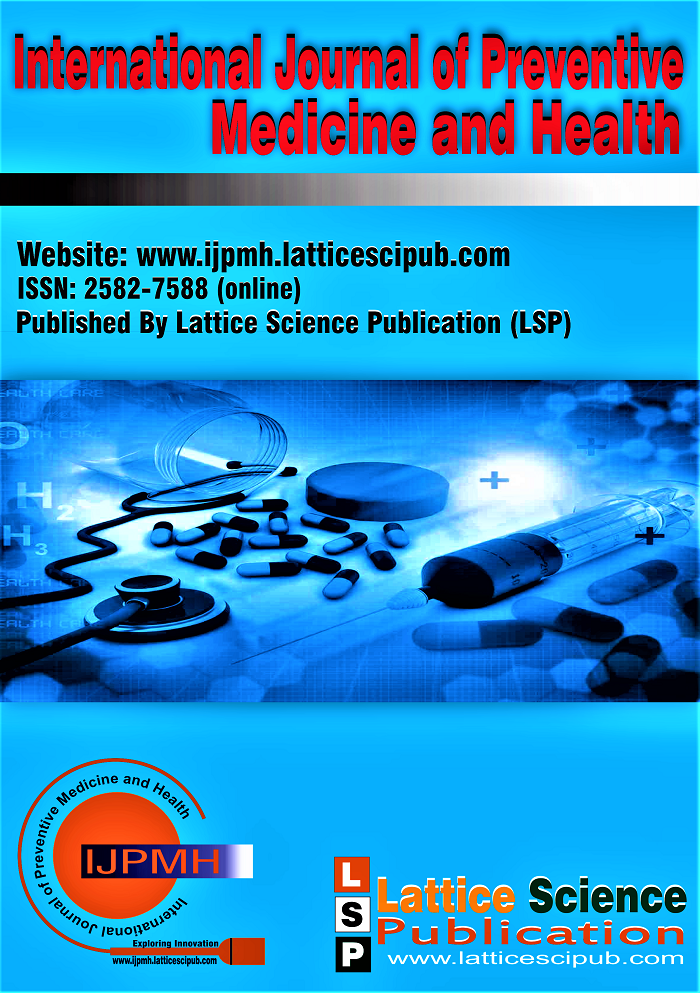Chronic Kidney Disease Prediction using Machine Learning Algorithms
Main Article Content
Abstract
Kidney diseases are increasing day by day among people. It is becoming a major health issue around the world. Not maintaining proper food habits and drinking less amount of water are one of the major reasons that contribute this condition. With this, it has become necessary to build up a system to foresee Chronic Kidney Diseases precisely. Here, we have proposed an approach for real time kidney disease prediction. Our aim is to find the best and efficient machine learning (ML) application that can effectively recognize and predict the condition of chronic kidney disease. We have used the data from UCI machine learning repository. In this work, five important machine learning classification techniques were considered for predicting chronic kidney disease which are KNN, Logistic Regression, Random Forest Classifier, SVM and Decision Tree Classifier. In this process, the data has been divided into two sections. In one section train dataset got trained and another section got evaluated by test dataset. The analysis results show that Decision Tree Classifier and Logistic Regression algorithms achieved highest performance than the other classifiers, obtaining the accuracy of 98.75% followed by random Forest, which stands at 97.5%.
Downloads
Article Details

This work is licensed under a Creative Commons Attribution-NonCommercial-NoDerivatives 4.0 International License.
How to Cite
References
Min Chen, Yixue Hao, Kai Hwang, Fellow, IEEE, Lu Wang, and Lin Wang, “Disease Prediction by Machine Learning over Big Data from Healthcare Communities”, IEEE Access 2017.
V. Mohan, “Decision Trees: A comparison of various algorithms for building Decision Trees,” Available at: http://cs.jhu.edu/~vmohan3/document/ai_dt.pdf
Garcia, Vincent & Debreuve, Eric & Barlaud, Michel. (2008). Fast k Nearest Neighbor Search using GPU. CVPR Workshop on Computer Vision on GPU. 10.1109/CVPRW.2008.4563100.
V V. Ramalingam ,Ayantan Dandapath, M Karthik Raja,” Heart Disease Prediction using Machine Learning Techniques: A Survey”, 7(2.8): p. 684-687 ,October 2018
I. Ahmad, M. Basheri, M. J. Iqbal and A. Rahim, "Performance Comparison of Support Vector Machine, Random Forest, and Extreme Learning Machine for Intrusion Detection," in IEEE Access, vol. 6, pp. 33789-33795, 2018, doi: 10.1109/ACCESS.2018.2841987.
Swethalakshmi, H., et al. Online handwritten character recognition of Devanagari and Telugu Characters using support vector machines. 2006.
Al-Talqani, H.M., Dyslipidemia and Cataract in Adult Iraqi Patients. EC Ophthalmology, 2017. 5: p. 162-171.
McKinley, R., et al., Fully automated stroke tissue estimation using random forest classifiers (FASTER). Journal of Cerebral Blood Flow & Metabolism, 2017. 37(8): p. 2728-2741.
Jos Timanta Tarigan, C.L.G., Elviawaty Muisa Zamzami, A REVIEW ON APPLYING MACHINE LEARNING IN GAME INDUSTRY International Journal of Advanced Science and Technology, 2019-09-27 28(2).
Chronic Kidney Disease Data Set, Available from: https://archive.ics.uci.edu/ml/datasets/chronic_kidney_disease
J. Davis and M. Goadrich, “The Relationship Between Precision-Recall and ROC Curves,” Proceedings of the 23rd International Conference on Machine Learning, Pittsburgh, 2006.
D. Tian, J. Zhou, Y. Wang, Y. Lu, H. Xia, and Z. Yi, “A dynamic and self-adaptive network selection method for multimode communications in heterogeneous vehicular telematics,” IEEE Transactions on Intelligent Transportation Systems, vol. 16, no. 6, pp. 3033–3049, 2015.
P. Groves, B. Kayyali, D. Knott, and S. V. Kuiken, “The big data revolution in healthcare: Accelerating value and innovation,” 2016.
M. Chen, S. Mao, and Y. Liu, “Big data: A survey,” Mobile Networks and Applications, vol. 19, no. 2, pp. 171–209, 2014.
P. B. Jensen, L. J. Jensen, and S. Brunak, “Mining electronic health records: towards better research applications and clinical care,” Nature Reviews Genetics, vol. 13, no. 6, pp. 395–405, 2012.
J. C. Ho, C. H. Lee, and J. Ghosh, “Septic shock prediction for patients with missing data,” ACM Transactions on Management Information Systems (TMIS), vol. 5, no. 1, p. 1, 2014.
“Ictclas,” http://ictclas.nlpir.org/
“word2vec,” https://code.google.com/p/word2vec/
Y.-D. Zhang, X.-Q. Chen, T.-M. Zhan, Z.-Q. Jiao, Y. Sun, Z.-M. Chen, Y. Yao, L.-T. Fang, Y.-D. Lv, and S.-H. Wang, “Fractal dimension estimation for developing pathological brain detection system based on minkowski-bouligand method,” IEEE Access, vol. 4, pp. 5937–5947, 2016.
S. Basu Roy, A. Teredesai, K. Zolfaghar, R. Liu, D. Hazel, S. Newman, and A. Marinez, “Dynamic hierarchical classification for patient risk-ofreadmission,” in Proceedings of the 21th ACM SIGKDD international conference on knowledge discovery and data mining. ACM, 2015, pp. 1691–1700.
Sak Haim, Andrew Senior, Franoise Beaufays, "Long short-term memory based recurrent neural network architectures for large vocabulary speech recognition", 2014.
D. W. Hosmer, S. Lemeshow, Applied Logistic Regression, Wiley Interscience, 2000.
C.J.C. Burges, "Simplified Support Vector Decision Rules", Proc. 13th Int'l Conf. Machine Learning, pp. 71-77, 1996.





